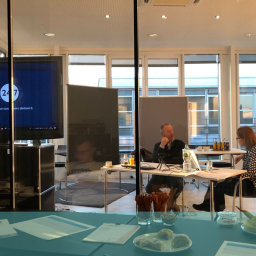
Developing Good International UX Personas
Online personas are constructs that are used to define users by identifying and assigning particular characteristics to them; in other words they are profiles of a fictional ‘customer’ who might be interested in using or purchasing your goods and services. By extension, international online personas are simply versions of these built and used in international UX research activity.
Rather than using demographic traits, this sort of definition is more likely to concentrate on attitudes, motivations and behaviours and seeks to understand the user in terms of what they are looking for from a purchase or interaction, how a product or service makes them feel or contributes to their self-image, what is the likely purpose or driver for their interaction and so on.
This type of profile building has become quite a common tool in domestic online marketing and research so it is perfectly logical that site owners and managers should seek to extend the principles to online international UX research and marketing analysis. The challenge in doing this (and the area where most people are likely to go wrong) is in assuming that a single online persona for international marketing. You need to ensure that, when you consider this technique you apply the same sort of rigour and analysis to the process as you would for the domestic consumer.
The purpose of personas is to gain a greater understanding of your audience and why they behave in the way they do; this enables marketers to understand and predict what will attract and engage users to their website and products. The only effective way to construct these personas is via research. If you survey your market and customers this will enable you to form a picture of what are your typical users and how they behave and interact with your product and web offerings. For example, if you were selling high-quality, expensive luxury fashion goods your personas might work out to be young affluent people who like to spend money on themselves and their self-image, or they might be middle-aged people buying expensive presents for their loved ones. Understanding these personas can help you cater for the differing demands and marketplaces for your goods.
International UX research is really no different in terms of the process. You need to understand the markets in the various international locations you are targeting and not simply try to export the domestic characteristics of your personas to external marketplaces. There might be shared attitudes, aims and aspirations but you need to test the market to discover what traits they have in common with their UK counterparts and what the major differences are. And to ensure real accuracy each potential market needs to be explored separately. You can’t treat the continent of Africa or S America or the Far East as single sectors. There will be appreciable cultural differences, for example, between Buddhist, Hindu, Christian and Muslim countries in Asia and Africa and Brazil is likely to have a different profile to most of the rest of S America. There might be similarities between countries in the same region that you can track and filter out of your research to make it more manageable but it is dangerous to assume too much without some sort of statistical confirmation.
For more information on research strategies go to our report on International user research.
Personas can be a very useful tool in international UX research; if you would like more information on how they are constructed and used and how they might be relevant and effective for your organisation, why not ring us on +44(0)800 0246 247, or email hello@ux247.com.


















[…] have mentioned in previous blogs, there has been a tendency for organisations to create multiple detailed personas for their home […]